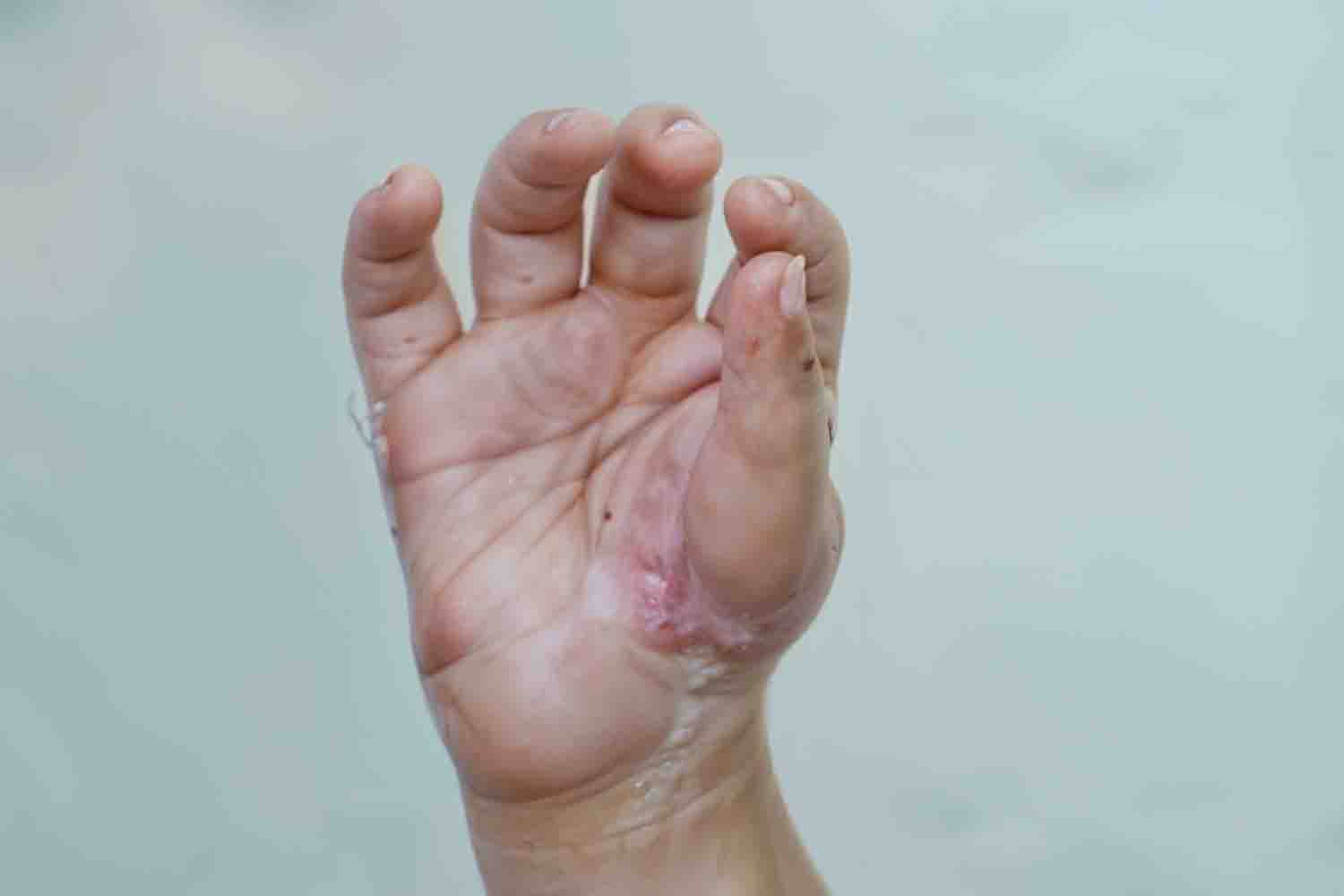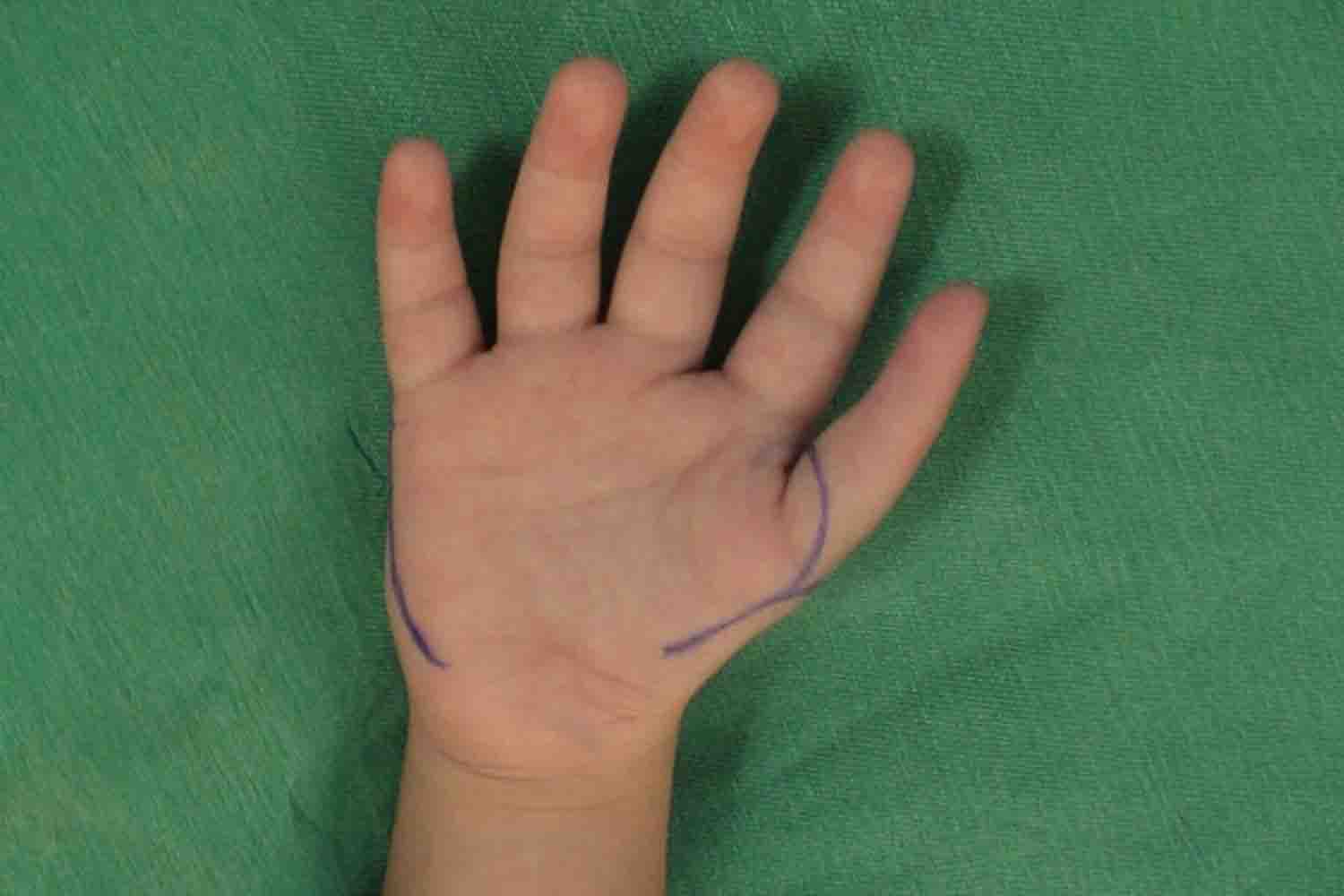Hand Surgery (Birth Deformities)
Absent Thumb / Thumb Hypoplasia
Thumb Hypoplasia / Absent Thumb, means that child born with unusually small or underdeveloped thumb. Thumb aplasia means child born with complete absence of thumb. This condition, where the thumb is underdeveloped or missing, can impact grip, dexterity, and overall hand functionality, affecting daily activities and quality of life.
With a deep understanding of both aesthetic and functional needs, Dr. Nahar crafts personalized treatment plans that aim to reconstruct the thumb, restoring not just appearance but also crucial dexterity and grip. Utilizing cutting-edge techniques and a patient-centered approach.
The thumb deformity can be corrected with physiotherapy, Reconstructive surgery and Index finger to thumb reconstruction (Pollicization), depending on severity. Dr. Nahar specializes in advanced reconstructive techniques designed to address thumb hypoplasia with precision and artistry, helping individuals regain essential hand function and improve their quality of life.
The thumb deformity can be corrected with physiotherapy, Reconstructive surgery and Index finger to thumb reconstruction (Pollicization), depending on severity. Dr. Nahar specializes in advanced reconstructive techniques designed to address thumb hypoplasia with precision and artistry, helping individuals regain essential hand function and improve their quality of life.
 After
After  Before
Before Drag
Hand Surgeries (Birth Deformities)
What Thumb Hypoplasia/ Absent Thumb Surgery do ?
- Restore Thumb Function: Improve grip strength and dexterity by reconstructing or replacing the absent or underdeveloped thumb, enhancing the hand's overall functionality.
- Enhance Aesthetic Appearance: Reconstruct the thumb to achieve a more natural and aesthetically pleasing appearance, which can help boost self-confidence and self-esteem.
- Improve Daily Activities: Enable individuals to perform daily tasks more effectively, such as writing, typing, or handling objects, by restoring essential thumb functions.
- Correct Congenital Deficiencies: Address and correct the congenital absence or underdevelopment of the thumb, providing a solution for individuals born with this condition.
our expert answers
frequently asked questions
Who is a candidate for this surgery?
Candidates include children or adults with congenital thumb hypoplasia or an absent thumb that affects hand function or appearance. It is particularly recommended for those whose daily activities are hindered by the condition or who seek an improved aesthetic outcome.
What does the surgery involve?
The procedure may involve transferring a finger to create a functional thumb (pollicization), reconstructing the existing thumb, or other techniques like tendon transfers and bone grafting. The specific approach depends on the severity of the hypoplasia or absence.
When is the best time to perform this surgery?
Early childhood is often considered the optimal time for surgery, as it allows for better integration of the thumb during the child’s development. However, adults can also benefit from the procedure, particularly if the condition affects their daily activities.
Will the surgery provide full functionality of the thumb?
While the goal is to restore as much function as possible, the extent of recovery depends on the severity of the condition and the specific surgical approach. Many patients achieve significant improvements in hand function and quality of life.
APPOINTMENT
